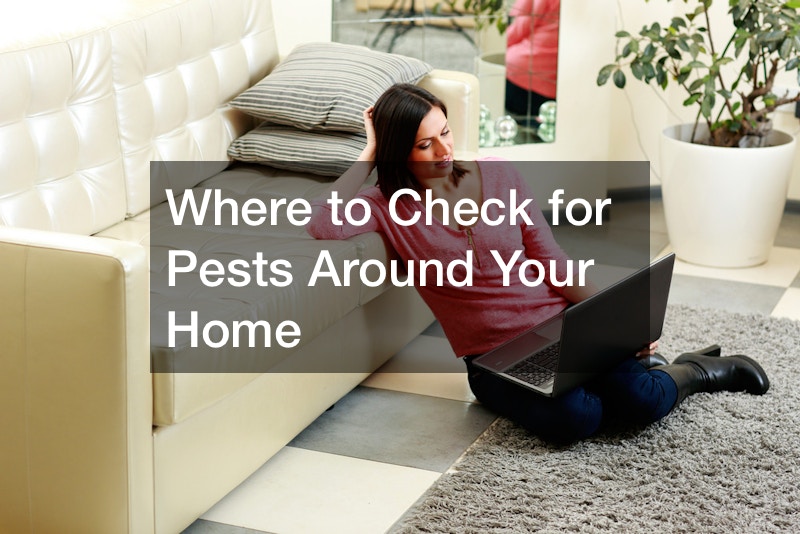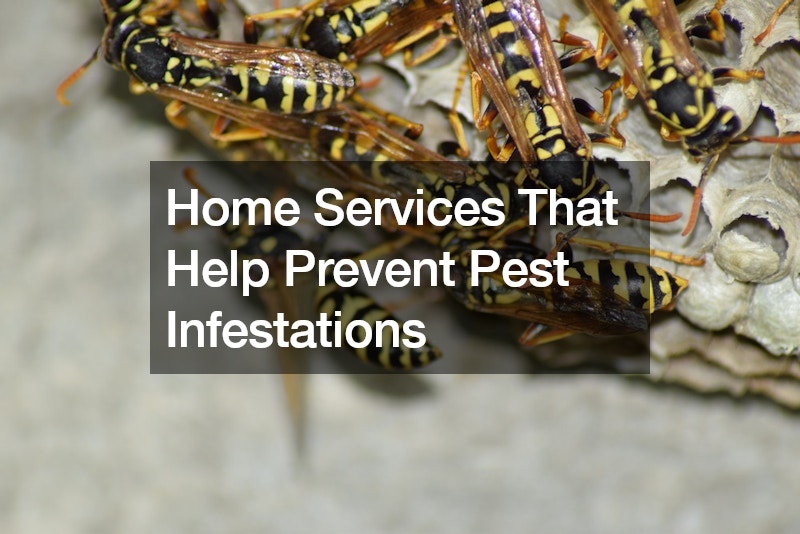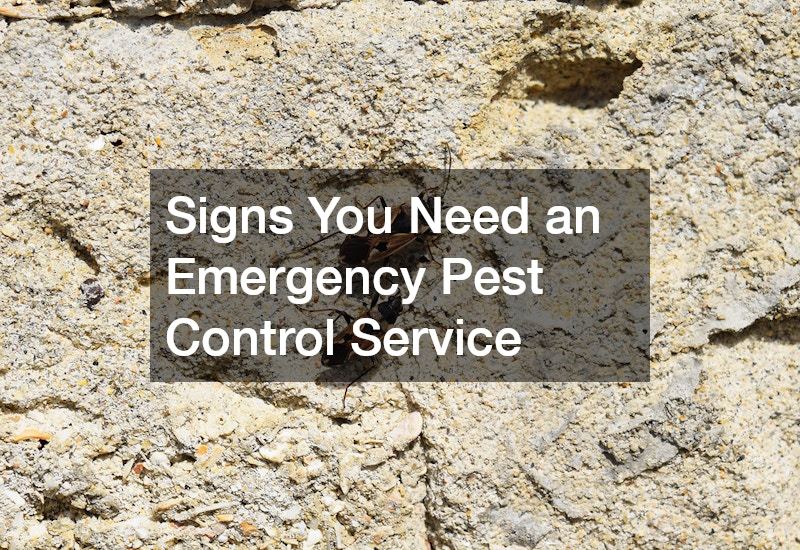According to a 2019 housing survey by the Census Bureau, over 14 million American homes and housing units have a pest problem. Unfortunately, despite being relatively common, pests can be a nightmare for you as a homeowner. First, most of them are creepy, make annoying noises, and can cause extensive damage to your home. On top of that, they are a health hazard – they can carry and spread disease-causing microorganisms.
The worst part is that your home could have bugs without you knowing. Therefore, you must regularly check your house for any signs of infestation. Below are some tips on where to check for pests and how to eliminate them.
Along Your Home’s Foundation
The foundation is one of the top areas where to check for pests in your home. Common bugs in the foundation include termites, carpenter bees, pillbugs, carpenter ants, and fire ants. These can make their way into your home through cracks and holes in the foundation. Pests can also crawl from other surfaces, such as debris, trees, and shrubs near the foundation’s edge, and dig their way into your home.
Unfortunately, pests in the foundation are every homeowner’s nightmare – they can cause structural damage to your home, leading to thousands of dollars in repairs. Therefore, once you identify them, you need to call a pest control company to remove them immediately. On top of that, you should look into foundation companies to help repair any damage caused by the bugs – and seal any cracks that gave them access.
You can also prevent future pest infestations in your home’s foundation by maintaining high standards of cleanliness, especially in the basement. On top of that, you should avoid damp conditions and immediately take care of any water leaks in your home. Lastly, you should hire regular pest control services to spray the areas surrounding your home that could hide pests.
Near Gaps in Your Garage Door
According to a survey by Pest World, 39% of homeowners with a pest problem spotted them in their garages. Therefore, if you’re looking for tips on where to check for pests in your home, the garage is an excellent place to start. Some of the common bugs you can come across in this area include mice, rats, spiders, snakes, termites, flies, crickets, beetles, etc.
Pests hide in the garage because of the warm and dark environment. They are also attracted to smells of foods, animal feeds, plants, and other items stored in the garage. Lastly, gaps in the garage door – or leaving it open for long – provide them with easy access into your home.
Therefore, you should also call for a pest and wildlife control specialist if you suspect a bug issue in the garage. On top of that, you should clean the room and eliminate any debris or items that can attract pests or hide them. Lastly, you should hire garage door services to fix any gaps or issues with the door, which could be offering bugs an access point into your home.

In Your Chimney
If you’re looking for more ideas on where to check for pests, you should look at your chimney and the fireplace. The chimney is usually warm and dark, creating a perfect environment for pests, rodents, and animals. It also has easy access to the outdoors, making it easy for these uninvited guests to enter your home.
Some of the most common pests you can come across in your chimney include fleas, ticks, mites, spiders, mice, moths, bats, birds, etc. These bugs are a nightmare, as they can carry and spread diseases to the house. They can also cause extensive and costly damage to your chimney. Lastly, pests and rodents can clog the duct, causing it to malfunction or, worse, cause a fire – animal droppings, fur, and nesting material are flammable.
Therefore, you must regularly inspect your chimney for signs of pests, and if identified, hire a professional to remove them. You can also keep your home free of bugs through frequent chimney cleaning to remove materials that might attract bugs and rodents. Lastly, you should install a chimney cap, keeping pests (and other debris) out of your home.
Along the Seams of Your Mattress
Your mattress is another common hiding ground for pests. And one of the most common pests in the mattress is the bed bug – which usually hides along the matress’ seam. However, besides bed bugs, your mattress (and bed) could also be housing other pests, such as dust mites, fleas, carpet beetles, cockroaches, etc.
Your mattress can become infested with bugs due to several reasons. First, it has a warm and humid environment. They can also find their way into your bed through your clothes, belongings, or pets. Lastly, some pests, such as bed bugs, are attracted to your bed by the warmth of your body.
Pests in the mattress can be very annoying, disrupting your sleep at night. They can also cause health problems such as asthma and skin infections. Worse, they can spread to other areas in your home.
Therefore, you need to immediately call a pest control specialist if you spot any of the above bugs in your bed. You can also prevent an infestation by keeping your bedroom clean. Lastly, you should consider looking into mattress for sale offers and buying a new mattress and bedding, especially if you have a bedbug infestation.

In Furniture Seams
According to Pests World, furniture is another one of the top areas where to check for pests. They are usually warm and have crevices where bugs can nest and breed. Additionally, food droppings and spills (especially from sugary foods) can attract bugs, causing an infestation. Pests can also find their way to your furniture through pets, clothing, and other personal belongings.
You can find several types of pests in your furniture, the most common being bed bugs. Besides beds and mattresses, furniture (especially sofas) is another favorite hiding spot for these nasty pests. Other bugs you can come across in your furniture include dust mites, fleas, ants, carpet beetles, spiders, ticks, centipedes, scorpions, lice, etc.
Pests hiding in furniture can be hard to eliminate and can spread to other areas of your home. Therefore, the best solution is to hire a pest control specialist to remove them. Additionally, you can prevent an infestation by cleaning and vacuuming your furniture and carpets regularly. Lastly, you should avoid purchasing second-hand furniture, which could contain hidden bugs that can spread quickly.
Deep Within Floor Rugs
Floor rugs and carpets are other top areas where to check for pests. You’re most likely to find bugs that love fabrics, for example, carpet beetles and moths, hiding in these areas. However, your floors, carpets, and rugs can hide other pesky insects such as bed bugs, fleas, silverfish, cockroaches, ants, etc.
The problem with pests in your rugs and carpets is that they can damage the fabric – carpet beetle and moth larvae feed on clothing. Pests hiding in these areas can also cause damage to your floors. Carpets and rugs also offer an ideal environment for nesting and breeding, with the bugs being spread to other areas of the home by pets, clothes, feet, etc.
Therefore, you should immediately eradicate infestations in your carpet and rugs. One of the best solutions is hiring professional carpet and rug cleaning services, which will eliminate hidden pets and their eggs. You should also hire a pest control company to spray pesticides in your home – if the bugs have spread to other areas.

In Kitchen and Bathroom Drains
It might not seem like it, but kitchen and bathroom drains are other top areas where to check for pests. The wastewater and food particles in drains can provide various insects with a reliable food source. Drains can also offer a breeding ground for these bugs, allowing them to move freely and enter your home.
Some of the most common pests in your drains include cockroaches, fruit flies, mites, drain flies, phorid flies, and spiders. The biggest issue with these bugs is that they can clog your drains and damage your plumbing system. They can also carry diseases and infections into your home, jeopardizing your family’s health. Lastly, they can be very annoying, especially by making weird noises or popping up when using the shower and sinks.
Therefore, you need to control any pests that may be living in your drains. The best way to do this is through proper cleaning using home remedies such as boiling water, vinegar, baking soda, store-bought drain cleaners, salt, etc. However, you should hire professional drain cleaning services for large infestations (or if your drains are clogged).
In Your Dryer Vent
The dryer vent is another area that can house pests in your home. The main reason for this is that the vent has an opening to the outside, which bugs and other animals can crawl into. Some of the top pests in your dryer vent include mice, spiders, bees, wasps, etc. However, it’s also not uncommon to find unusual animals, such as snakes hiding in the dryer vent, especially in cold months.
Having pests and animals in a dryer vent can be problematic. First, they can carry diseases into your home, and some’ like wasps, bees, and snakes, can be dangerous. Secondly, they can clog the vent, causing your clothes dryer to malfunction or cause a fire.
Therefore, you should promptly deal with potential pests in your dryer vent. If you suspect an active infestation, you should immediately call a pest exterminator to eradicate them. Then, you should hire dryer vent cleaning services to eliminate any debris left behind – and to prevent further infestations. Lastly, you can install a dryer vent cap, preventing future pest problems.

In Your Outdoor AC Unit
The AC Unit is another area where to check for pests in your home. Bugs and animals like termites, wasps, cockroaches, spiders, ants, mice, and snakes can enter your air conditioning unit through ducts and holes inside the wall. The warmth of the AC and the dark and humid environment also offers these nasty pests a perfect place to nest and potentially breed.
The problem with pests in your AC unit is that they can carry diseases. Pet droppings, fur, and other materials can also lead to a foul smell throughout the house. Bugs and animals can also damage the AC unit by chewing wires and refrigerant lines or clogging the vents. This can lead to costly repairs or even force you to get a new AC unit if the damage is too extensive.
Therefore, you must take proactive measures to ensure that pests don’t end up in your AC unit. First, you can seal off any gaps or holes that they can use to gain access to your home. Secondly, you should regularly hire a pest control specialist to spray the outdoors with pesticides, including the area near your AC vents.
In the Attic and Basement
If you’re still looking for ideas on where to check for pests in your home, the attic and basement are two other areas to consider. Bugs and animals can enter your home through these two areas due to their proximity to the outdoors. For example, the attic is near the roof and has gaps for ventilation. Likewise, pests can enter the basement through cracks in the foundation and openings in the windows.
Common pests in the attic and basement include bats, bees, carpet beetles, flies, mice, rats, wasps, spiders, snakes, millipedes, etc. They can be a nuisance as they can breed and spread to other areas of the home. They can also wreak havoc on your home by damaging your attic, roof, walls, floors, and foundation.
Therefore, you should hire pest control services if you suspect an infestation in your attic or basement. In addition, you should keep these areas clean and free of any debris, moisture, or other items that bugs can use as food or nesting material. Lastly, you must seal or cover any gaps that can lead to your attic or basement, keeping the nasty bugs and animals out.
No one likes pests in their home – they are creepy, annoying, and potentially a health and safety hazard. They can also cause a lot of damage to your home that can be costly to fix. The tips above can help you know where to check for pests in your home, allowing you to eradicate them. They can also help you keep your home pest-free and protected from future incidents.



